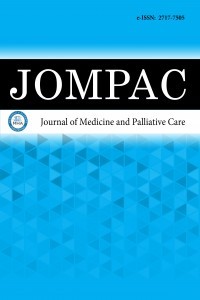1.
Khan IU, Aslam N, Anis FM, et al. Amniotic fluid classificationand artificial intelligence: challenges and opportunities. Sensors(Basel). 2022;22(12). doi:10.3390/s22124570
2.
Fitzsimmons ED, Bajaj T. Embryology, Amniotic Fluid.StatPearls. 2023.
3.
Figueroa L, McClure EM, Swanson J, et al. Oligohydramnios: aprospective study of fetal, neonatal and maternal outcomes inlow-middle income countries. Reprod Health. 2020;17(1):19.doi:10.1186/s12978-020-0854-y
4.
Sahin E, Madendag Y, Tayyar AT, et al. Perinatal outcomesin uncomplicated late preterm pregnancies with borderlineoligohydramnios. J Matern Fetal Neonatal Med. 2018;31(23):3085-3088. doi:10.1080/14767058.2017.1364722
5.
Vahid Dastjerdi M, Ghahghaei-Nezamabadi A, Tehranian A,Mesgaran M. The effect of sildenafil on pregnancy outcomes inpregnant women with idiopathic borderline oligohydramnios:a randomized controlled trial. J Family Reprod Health.2022;16(2):124-131. doi:10.18502/jfrh.v16i2.9482
6.
Gumus, II, Koktener A, Turhan NO. Perinatal outcomes ofpregnancies with borderline amniotic fluid index. Arch GynecolObstet. 2007;276(1):17-19. doi:10.1007/s00404-006-0309-x
7.
Banks EH, Miller DA. Perinatal risks associated with borderlineamniotic fluid index. Am J Obstet Gynecol. 1999;180(6 Pt 1):1461-1463. doi:10.1016/s0002-9378(99)70037-2
8.
Wood SL, Newton JM, Wang L, Lesser K. Borderline amnioticfluid index and its relation to fetal intolerance of labor: a 2-centerretrospective cohort study. J Ultrasound Med. 2014;33(4):705-711. doi:10.7863/ultra.33.4.705
9.
Bajracharya N, Dangal G, Poudel R, et al. Comparison ofperinatal outcomes between borderline and normal amnioticfluid index in term singleton pregnancies. J Nepal Health ResCounc. 2021;18(4):709-713. doi:10.33314/jnhrc.v18i4.3051
10.
Rathod S, Samal SK. Evaluation of maternal and perinataloutcomes of induction in borderline oligohydramnios atterm. J Clin Diagn Res. 2017;11(9):QC05-QC07. doi:10.7860/JCDR/2017/26313.10612
11.
Phelan JP, Smith CV, Broussard P, Small M. Amniotic fluidvolume assessment with the four-quadrant technique at 36-42weeks’ gestation. J Reprod Med. 1987;32(7):540-542.
12.
Choi AY, Lee JY, Sohn IS, et al. Does the summer season affect theamniotic fluid volume during pregnancy? Int J Environ Res PublicHealth. 2021;18(18):9483. doi:10.3390/ijerph18189483
13.
Vennila M, Deepika S. Borderline oligohydramnios in termpregnancy and it’s relation with pregnancy outcome. Int J ReprodContracept Obstet Gynecol. 2021;10(2):505-511.
14.
Petrozella LN, Dashe JS, McIntire DD, Leveno KJ. Clinicalsignificance of borderline amniotic fluid index andoligohydramnios in preterm pregnancy. Obstet Gynecol.2011;117(2 Pt 1):338-342. doi:10.1097/AOG.0b013e3182056766
15.
Lekkala S, Ramarao V, Bonela S, Devi R. Maternal and perinataloutcomes in pregnancies with borderline oligohydramnios versusuncomplicated normal amniotic fluid index. J Med Sci Clin Res.2020;8:932-938.
16.
Jamal A, Kazemi M, Marsoosi V, Eslamian L. Adverse perinataloutcomes in borderline amniotic fluid index. Int J Reprod Biomed.2016;14(11):705-708.
17.
Choi SR. Borderline amniotic fluid index and perinatal outcomesin the uncomplicated term pregnancy. J Matern Fetal NeonatalMed. 2016;29(3):457-460. doi:10.3109/14767058.2015.1004051
18.
Martinez Medel J, Campillos Maza JM, Lapresta Moros C,Villacampa Pueyo A, Tobajas Homs J. [Cervical preinductionand oligoamnios]. Ginecol Obstet Mex. 2008;76(9):499-506.Preinduccion cervical y oligoamnios.
19.
Luo X, Huang Y, Liang R. [Analysis of 196 cases of trial of laborwith borderline oligohydramnios assessed by ultrasound].Zhonghua Fu Chan Ke Za Zhi. 1998;33(10):585-587.
20.
Magann EF, Lang P, Morrison JC. Clinical significance ofborderline amniotic fluid index and oligohydramnios in pretermpregnancy. Obstet Gynecol. 2011;117(6):1435. doi:10.1097/AOG.0b013e31821d455a
21.
Zilberman Sharon N, Pekar-Zlotin M, Kugler N, et al.Oligohydramnios: how severe is severe? J Matern Fetal NeonatalMed. 2022;35(25):5754-5760. doi:10.1080/14767058.2021.1892068

